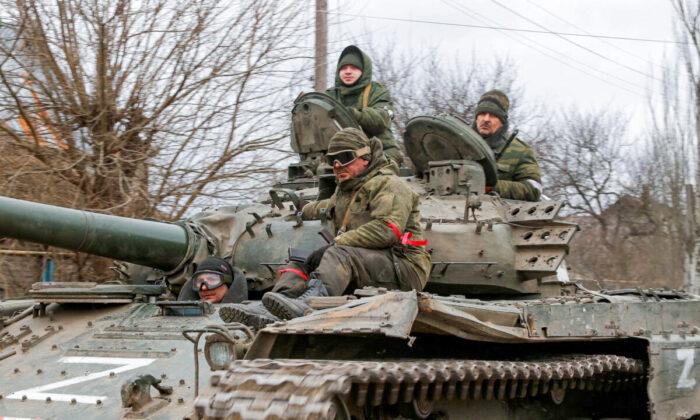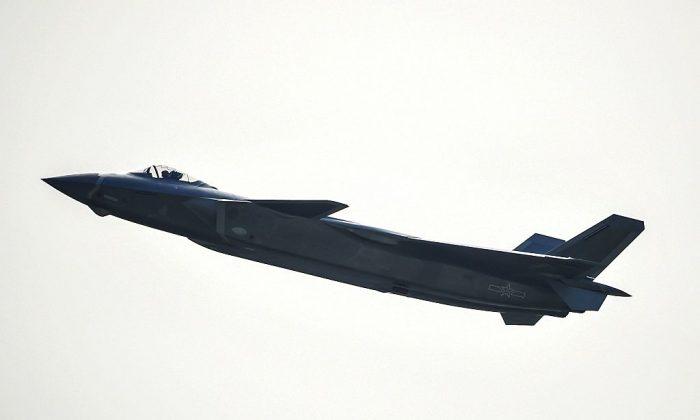Commentary
While the war in Ukraine is still raging, it isn’t too early to draw some conclusions about the fighting and see how “lessons learned” might apply to NATO and our Pacific Allies.
On the ground, the evidence is clear that a far smaller Ukrainian military has been able to fight the Russians to a standstill in many places, and inflict what appear to be unacceptable damages on them. The true figures of Russian equipment destroyed are not yet known, but it’s clear Russia has lost over
200 main battle tanks, air defense systems, including the
BUK and
Pantsir, and fighter aircraft, including the
Su-34, and
attack helicopters. Moreover, the number of Russian troops killed in Ukraine has soared. The Ukrainians say more than 15,000 Russians have been killed; the Russians say far less, but families in Russia are starting to complain to Moscow, and the Russians, who have been trying to kill social media, have
not managed to shut down cell phones, where phone calls and videos from the war are now widely shared. Allegedly, the Russians are
not bringing bodies back to Russia for burial in order to hide rising casualties.
Meanwhile, a number of Russian army senior officers,
including two generals, have been killed, probably by well-trained Ukrainian snipers.
Inside Russia, there’s deep frustration, because the modern Russian army has performed poorly and at great cost to the motherland. Is that Putin’s fault or the fault of the Russian military, which had plenty of time to prepare for the war and then made a mess of the operation? At the end of the day the Russian military, which enjoyed great public support in Russia, has got a very black eye, and so does Putin.
Russia has failed on the ground and in the air, and even
managed to lose a modern patrol ship, the Vasily Bykov (2018), to a shore-launched missile strike. There’s no information on the survival of the 60-man crew. The Bykov is the same ship that famously shelled Snake Island, near the Danube Delta, where the Ukrainian soldiers on the island challenged the Russians before they were blasted. They survived.
The first lesson starts with the role of Special Forces. NATO countries plus some others, including Israel,
have been training Ukraine’s special forces, going back to 2015. These forces are equipped with surveillance equipment, including drones, sniper rifles, and anti-tank missiles including the U.S.
Javelin and the British-Swedish
NLAW, possibly also U.S.
Stinger MANPADS anti-aircraft missiles, and are trained to ambush invading forces. While we have few facts to go on, it’s clear that Russian invasion columns have been ambushed, and Ukraine’s special forces are almost certainly in the forefront of the attacks.
The second lesson is that armed drones are very effective. The Ukrainians are using the
Turkish Bayraktar drone that carries two lethal rockets (called
MAM-L) that it can launch onto targets. The Bayraktar, working along with Israeli drones such as the
Heron and Israeli loitering munitions such as the
Harop, devastated Armenian-backed forces in the
Nagorno Karabakh war. Israel produces a number of other loitering munition drones, including smaller types that may be operating in Ukraine.
The third lesson is that air defenses are very important, if they are defended properly. Before the war, Ukraine had around 250
S-300 air defense systems, 100
TOR mobile air defense systems, and 72 BUK systems. In the Nagorno Karabakh conflict, these were targets for armed drones and loitering munitions, but there isn’t any information that the Russians employed their own drones against the Ukrainian defenses. But, the Ukrainians have used their air defenses against Russian jet fighters and fighter bombers. At the same time, Russia has had problems bringing in their own air defense systems because, as they moved in convoy, they were hit either by Javelins and NLAWs or from overhead by Bayraktars. The big picture is that mobile air defense systems are important, but they’re highly vulnerable when they’re brought into combat zones in convoys.
One air defense system that appears to have been quite effective is the Stinger MANPADS. Stinger was supplied by the United States during the time Russian forces were in Afghanistan, and the Stingers were very effective in downing Russian helicopter gunships, fighter jets, and transport aircraft. The United States supplied those Stingers to the Mujahideen starting in 1986, 36 years ago. The Russians, therefore, have had a very
long time to figure out countermeasures. Whatever they came up with clearly doesn’t work, as Russian helicopter gunship losses in Ukraine testify.
Russian tanks and armor have also been blasted. Russian tanks, such as the
T-72 (not the most modern Russian tank), have been retrofitted with
reactive armor for tank protection. But reactive armor is not enough to stop the Javelin or NLAW. Israel was the first to develop an active protection system for armor, which senses an incoming missile or shell and intercepts and destroys it. Russia says it developed its own version of Israel’s system, called Arena-M. There’s no information that Arena-M was installed on Russian tanks in the Ukraine war. Either the Russians lacked the funds to equip their tanks with
Arena-M, or Arena-M didn’t meet Russian army requirements. A clear lesson for the United States, its Pacific Allies, and NATO is that armor active defense systems are an absolute necessity. Just as the Javelin and NLAW have been effective, Russian anti-tank weapons, such as the
Kornet (9M133) and the helicopter-launched
Vihr-1, also are a threat to allied forces. That’s why some NATO countries and the United States are starting to install the Israeli
Trophy active defense system on tanks such as the Abrams M1 and infantry fighting vehicles such as the
Bradley.
If one looks at South Korea, where the threat is from heavy armor attacks and artillery bombardment, it’s clear that South Korean forces need effective drones along with active protection systems. The same is true for Japan. For Taiwan, it’s particularly important to have effective special forces with a range of equipment similar to what has been done in Ukraine. Taiwan, if attacked, will need to fend off a Chinese missile, air, and naval attack and then probably have to fight against Chinese paratroopers who will try to get behind coastal defenses. Well-trained special forces with the right equipment can be effective and costly to China, especially if the attacks fail. U.S. Marines and U.S. Special Forces have been
secretly training Taiwan forces.
It goes without saying that air defenses remain an important priority. The United States should be happy with the performance of the Stinger, but Stingers alone aren’t enough to stop missile attacks or stop fighter bombers equipped with stand-off weapons. That requires modern, sophisticated air defense systems. The United States and its NATO allies have fallen behind in fielding up-to-date air defense systems, which isn’t good for NATO or for defense in the Pacific region. What’s needed is a layered and integrated air defense network that is deployable and reasonably mobile to confuse the enemy. The technology exists already, but the funding and will to field such systems is still mostly missing.
While it’s somewhat comforting that the Russians have done poorly in attacking Ukraine, and much of their equipment has proved vulnerable, in the bigger picture that will not always be the case. In the next few years, the United States, NATO, and our Pacific allies need to strengthen our fighting capabilities and learn what lessons we can from the Russian attack on Ukraine.
Views expressed in this article are opinions of the author and do not necessarily reflect the views of The Epoch Times.





